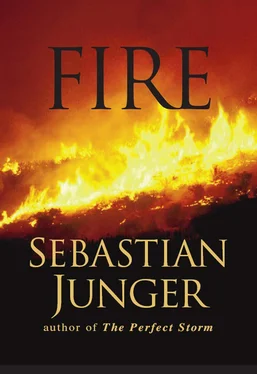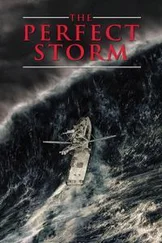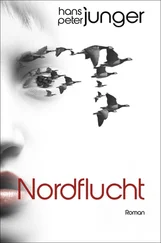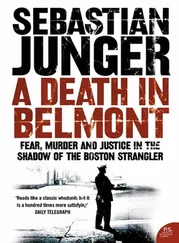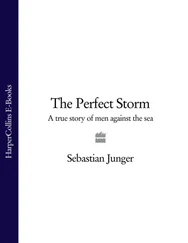Despite the graceful logic of these principles, warfare remains a chaotic business that will always resist governments’ efforts to legislate it. Still, it is all too clear that Serb forces in Kosovo violated just about every law in the book. Furthermore, the violations were carried out on such a massive scale that they also qualified as crimes against humanity—that is, they represented a widespread and systematic campaign against a particular population. Massacring noncombatants—as countless armies have done, including our own—is simply a war crime; trying to drive an entire group of people from your country is a crime against humanity. One could reasonably argue that the Turkish pogrom against the Armenians during World War I qualifies as a crime against humanity, as does the United States’ ethnic cleansing of Native Americans.
The novel thing about the 1949 humanitarian law was that it protected the citizens of an offending state as well as those of foreign states, and it applied to peacetime as well as war. Until then governments could do pretty much what they wanted with their own citizens; the most that another nation could do was express its “concern” over the situation. After 1949, in theory a government’s conduct at home would be subject to the same standards as its conduct abroad, and human rights abuses could no longer be dismissed as simply an “internal matter.” National sovereignty, in other words, would never again protect a government from the bite of the law.
The Hague’s press spokesman in Kosovo after NATO’s takeover was a young Englishman named Jim Landale. Dressed in jeans and a fleece jacket, with a backpack over his shoulder, he looked more than anything like a college student striding around the streets of Priština. After returning from Meja, I found him in the new UN headquarters, a concrete office building behind the huge, ghastly Grand Hotel at the center of town. A nearby apartment block was smoking slowly from an arson fire, and a lot of young ethnic Albanians were hanging out in front of the hotel, looking for work with the foreign journalists. Landale and I crossed the street to one of the cafés that had just opened and ordered the last two beers that it had in stock.
The tribunal’s full name is the International Criminal Tribunal for the Former Yugoslavia—or ICTY, as it’s commonly known. It was created in May 1993 to prosecute Bosnian war crimes, and it was later joined by another tribunal for Rwanda. The ICTY has successfully prosecuted several cases from the Bosnian War, mostly against Serbs, despite being hampered by evidence that was in some cases several years old. But it has never before investigated war crimes that were committed so recently, and it has never indicted a head of state during an ongoing armed conflict. Landale, between interruptions by cell phone, explained to me the ICTY strategy in Kosovo.
“This is our biggest undertaking by far,” he said. “We’re still trying to assess and prioritize all the sites. The murder of civilians is a war crime…what we’d try to assess would be: How do the various factors relate to our investigations for indictments against certain individuals?…Most villages have some sort of crime scene; every one’s got their massacre site just around the corner. To be realistic, we are not going to be able to visit every site in Kosovo.”
The criteria for prioritizing sites are unflinchingly pragmatic. One would think that Meja, where several hundred men were machine-gunned in a field, would make a better investigation site than, say, a house where just one family was wiped out. Or that the murder of twenty women and children in a basement would be easier to prosecute than the summary execution of twenty KLA soldiers after a battle. Not so; for the most part, sites are chosen simply for the quality of corroborating evidence that can be gathered. During the NATO bombing campaign, investigators in the refugee camps systematically recorded hundreds of eyewitness accounts of massacres; it was information from those interviews that led to the original indictment handed down in May. A small site with excellent eyewitness accounts, in the eyes of a war crimes prosecutor, is far more valuable than a large site with none.
Similarly, a massacre in an area where a certain military or paramilitary group—such as Arkan’s Tigers, who allegedly committed numerous massacres around Gjakovë—was known to have been working is higher priority than a massacre site where the killers are unknown. And a site that presents any sort of access problem is quickly superseded by one that can be worked on immediately. Land mines are considered an access problem, as are remote areas and sites with too many bodies. The amount of labor required to dig up even one body is considerable, so a mass grave like the one in Meja requires backhoes and bulldozers. The first crime teams flown into Kosovo didn’t think to bring any.
“One of our hopes is that the tribunal will work as a deterrent,” said Landale when I asked him—given the chance that Milošević will never be brought to trial—what the point of all this is. “And it will also help to relieve a collective sense of guilt. Not all people on one side are guilty—just certain individuals. The investigations should make that clear.”
There are more than a dozen crime teams in Kosovo, totaling some three hundred people. Scotland Yard, the Royal Canadian Mounted Police, and the FBI all have sent teams, as have police agencies from Germany, Denmark, France, Holland, and Switzerland. Their job is to photograph and diagram massacre sites named in the ICTY indictments and to gather such evidence as shell casings, bullets, bloody clothing, and anything else that might identify the killers and the method of death. Then the teams attempt to identify human remains—at least to the extent of knowing the age and sex—and conduct autopsies to determine the cause of death. The large mass graves with hundreds of bodies will be investigated months later, after the delicate surface evidence all has been gathered. Buried corpses change very slowly. Most of the evidence they contain is still there a year later.
The FBI team, consisting of sixty-four people and 107,000 pounds of equipment, arrived in Skopje on June 22 in an air force C-5. The team was completely self-sufficient, and it included, on loan from the Armed Forces Institute of Pathology, a forensic anthropologist, two forensic pathologists, and a criminalist, as well as FBI evidence collection experts, two caseworkers from Physicians for Human Rights, a trauma surgeon, and heavily armed Hostage Response Team agents. From Skopje, the team continued by marine helicopter and truck convoy to Gjakovë, where they set up their tents and field morgue under some shade trees inside the Italian Army field base. On the flight over, they got their first glimpse of Kosovo’s devastation: entire villages burned to the ground and cows lying in fields, their hindquarters blown off by land mines. Early the next morning in Gjakovë, they got to work.
They had to go no farther than across the street to investigate one of their first crime scenes, a house where Serb special police had executed six men in the middle of the night. A seventh man was wounded but didn’t die. He managed to crawl out of the house as it burned and—with the help of female relatives—eventually make it to Albania before dying from loss of blood.
The FBI quickly moved through three more sites in Gjakovë, including one where Serbs had taken twenty-five men at gunpoint and mowed them down with machine-gun fire. There were no survivors, but there were eyewitnesses, and again, their accounts were recorded by ICTY investigators. The ICTY was running into a problem, though: There were so many bodies in Kosovo that every time it investigated a site, locals would tell the investigators about several more, and the list was growing almost exponentially. The FBI team, which had originally been charged with investigating only two sites, worked so quickly that the ICTY tacked seven more on. Most were in and around Gjakovë, and two were outside Peja, in the northwestern corner of the province.
Читать дальше
